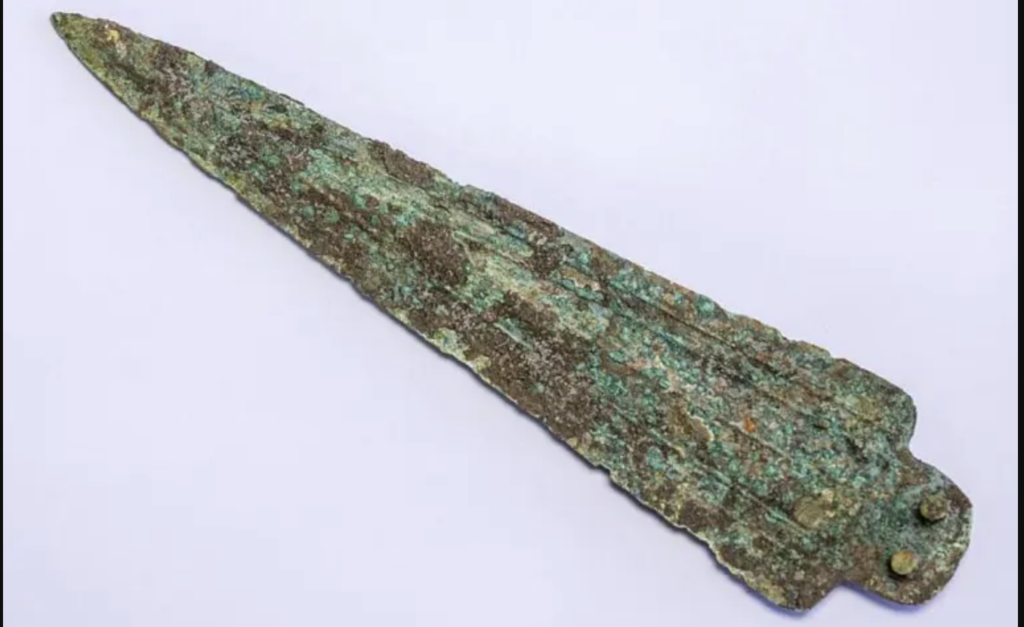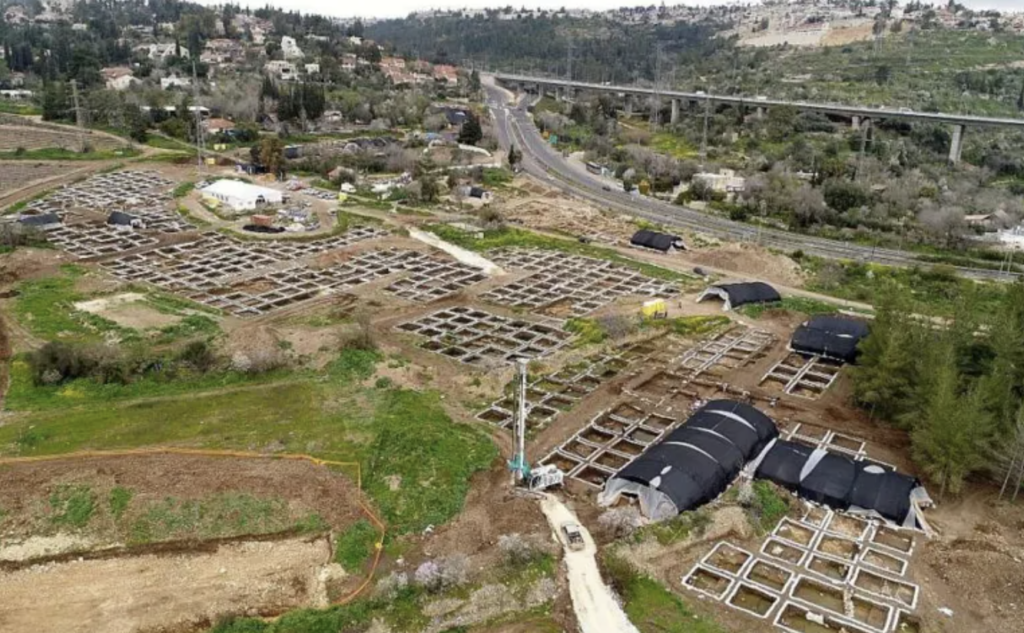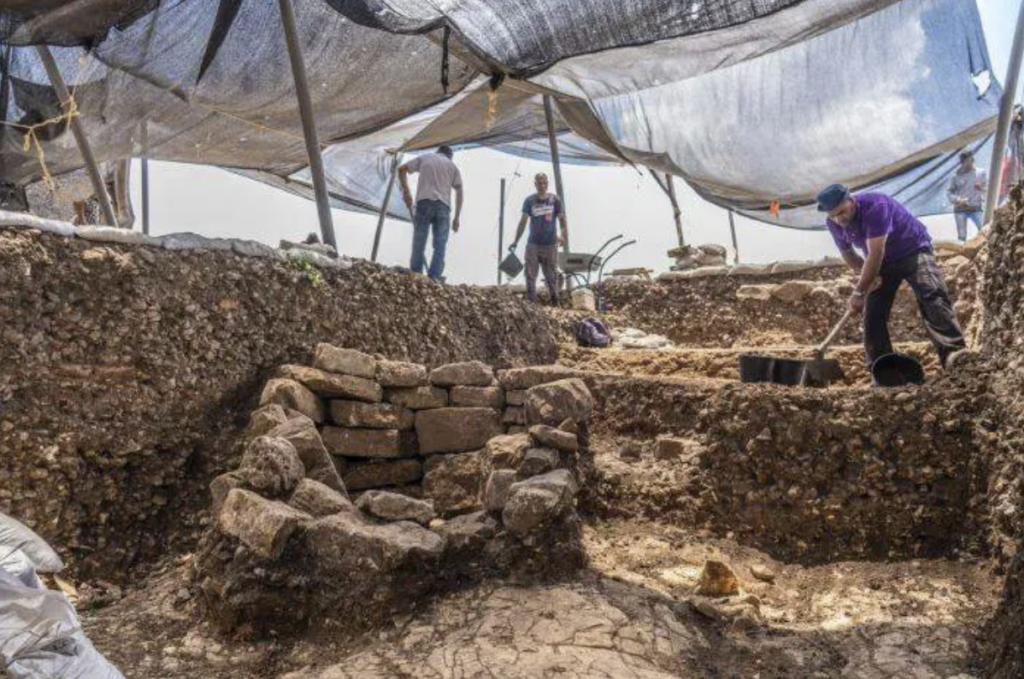Archaeologists have unearthed a 9,000-year-old ancient city found near Jerusalem, marking a significant breakthrough in our understanding of early human civilization. Located near Motza, this expansive Neolithic site is one of the largest discovered in the region, challenging previous assumptions about the area’s ancient habitation. Yaniv Berman, from the Israel Antiquities Authority, was asked to survey the area before a highway was planned to be built at the site, which is when the settlement was discovered. This discovery offers invaluable insights into the social and economic dynamics of early societies in the region, providing a rare glimpse into human history before the advent of written records.
Uncovering a Lost World: What The Discovery Tells Us About Early Inhabitants
During the 2019 excavation, the Israel Antiquities Authority discovered the site contains well-planned homes, public spaces, and burial areas. Its size and organization suggest a settled community of 2,000 to 3,000 people once called the settlement home. They farmed wheat, barley, and legumes, showing they had moved beyond simple hunting and gathering. Tools like flint sickles and grinding stones suggest they harvested and processed their crops with skill. Animal bones found at the site show they raised livestock and hunted for extra food.

Trade played a key role in their daily lives. Archaeologists discovered obsidian from Turkey and seashells from the Red Sea, proving they had contact with distant regions. This suggests early trade networks were more advanced than previously thought. The presence of burial sites and figurines hints at spiritual or religious beliefs. Some graves contained offerings, showing they may have honored their dead with rituals.
The ancient city’s design, including designated living and communal areas, points to a structured society with shared responsibilities. Their homes, made from mud bricks, had separate spaces for living, cooking, and storing food. Some people likely focused on farming, while others made tools or traded goods. These discoveries challenge old ideas about early humans in the region. They prove that organized settlements existed much earlier than previously thought, reshaping what we know about ancient life.
Rethinking History: What the Ancient City Found Near Jerusalem Reveals
The discovery of Tel Motza forces historians to rethink early human civilization. Covering dozens of acres, the settlement lies about three miles northwest of central Jerusalem. Before this find, experts believed large settlements in the region appeared much later. This site proves that thousands of people lived together in an organized society 9,000 years ago. It challenges the idea that early humans lived only in small groups. Instead, it shows they built structured communities long before cities were thought to exist.

“So far, it was believed that the Judea area was empty, and that sites of that size existed only on the other bank of the Jordan river, or in the Northern Levant,” a joint statement by Vardi and archaeologist Hamoudi Khalaily read. “Instead of an uninhabited area from that period, we have found a complex site, where varied economic means of subsistence existed, and all this only several dozens of centimeters below the surface.”
Vardi also added, “Thousands of years before the construction of the pyramids, what we see in the neolithic period is that more and more populations turn to live in a permanent settlement,” said Vardi. “They migrate less and they deal more and more in agriculture.”
The discovery adds a new chapter to history, showing that complex societies existed far earlier than previously recorded. “It’s a game changer, a site that will drastically shift what we know about the Neolithic era,” said Jacob Vardi in an IAA press release.
Final Thoughts
The ancient city found near Jerusalem has reshaped what experts know about early human civilization. The site’s well-planned layout, trade networks, and advanced farming techniques challenge old ideas about how societies developed. These findings suggest that people in this settlement were not just surviving—they were building a structured, thriving society.

This discovery forces researchers to rethink early human history. It provides new evidence that ancient people organized their communities with specific roles and responsibilities. The site’s size and design suggest that early humans were more advanced than previously believed. Each artifact adds to the growing picture of how these people lived and interacted.
As excavations continue, more details will likely emerge. This ancient city has already changed archaeology, and future discoveries may reveal even more about the origins of human civilization. What was once a forgotten settlement is now a key piece in the story of our past.
Read More: Archaeologists Discover a Bronze Age Civilization ‘Megaforts’ In Central Europe

